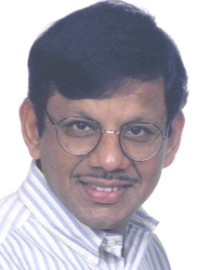Contribute
| Technology - Power Sector Reforms In India |
Pradeep Kumar Agarwal
09/16/2004
(This article is sponsored by The Boston Group)
Indian Power Sector Today
At present only 55% households in India have access to electricity. Most of those with access do not get uninterrupted supply. India has a total installed capacity of about 100,000 MW. The majority of India’s generation, transmission and distribution are either in the hands of state governments or federal government with approximately only ten percent of generation in the private sector whereas in the U.S. approximately 80% of generation, transmission and distribution are in the hands of private sector. Under the Constitution of India, power is subject to concurrent jurisdiction. Therefore, federal government as well as state governments has broad authorities. In the US, the federal government regulates wholesale power and retail sales are within the purview of state governments.
India embarked upon a journey of establishing regulatory commissions in 1998 and established Central Electricity Regulatory Commission at the federal level. Since then, India has constituted State Electricity Regulatory Commissions (SERCs) in 21 of its 28 states, which are similar in many respects to State Public Service Commissions in the U.S. India is in the midst of a major privatization effort and plans to add 100,000 MW of generation and 30,000 MW of transmission capability by 2012. The Electricity Act, 2003 became effective in June 2003, which encourages private sector participation in all three areas of electricity - generation, transmission and distribution.
Privatization of Distribution Circles in Delhi
The Orissa privatization experiment that began seven years ago was a fiasco. A different approach is being tried in Delhi. Delhi Vidut Board (DVB) divided the entire urban area into three distribution circles and transferred the distribution of power in these circles to private companies in 2002. DVB has awarded two distribution circles to Bombay Suburban Electric Supply (BSES) and the remaining distribution circle to Tata Power Company (TPC). Under the agreement, DVB sold a 51 percent stake to BSES and TPC in each distribution circle. BSES and TPC have agreed to reduce the T&D losses by at least 17% in the next five years. The private companies have been assured of much-needed political support. Some progress has been made in Delhi in the area of customer service; customer complaints are being properly lodged and investigated. Other states are watching the distribution reforms carefully in Delhi. If the Delhi privatization experiment succeeds, many private companies would bid for distribution circles in other urban areas.
Plight of US Companies in India
During conversation with officials of US-based companies that are still operating in India, it appeared that the climate is not good for any new entry by a US-based power company for ownership of generation or distribution circles. In fact, the few that are still doing business in power sector in India are contemplating exiting the market. This is because their financial losses are mounting and they have run arrears in millions of dollars for power delivered or services provided to the State Electricity Boards (SEBs).
High Transmission and Distribution Losses
Privatization is seen as the only cure to an ailing power industry, which is reeling under large Transmission and Distribution (T&D) losses. In some states, the T&D losses are as high as 50%. This is several times higher than T&D losses seen elsewhere in the world. For example, in the U.S., T&D losses average around 8%. Much of the high T&D losses in India are nothing but theft.
The Electricity Act, 2003
The Electricity Act, 2003 became effective in June 2003 and replaced all three existing legislations in this area. The main features of the new Act are: (1) generation being de-licensed and captive generation freely permitted; (2) transmission to be in the hands of federal or state government, with provision for private licensees in transmission; (3) entry permitted in distribution through an independent network; (4) distribution licensees free to undertake generation and generating companies free to own distribution; (5)mandatory metering; (6) appellate tribunal to hear appeals against the decision of the CERC and SERCs; and (7) stringent penalty for theft of electricity.
You may also access this article through our web-site http://www.lokvani.com/

